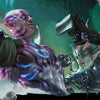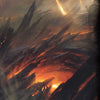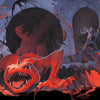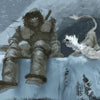Designing the Perfect D&D Boss Fight - Part 2
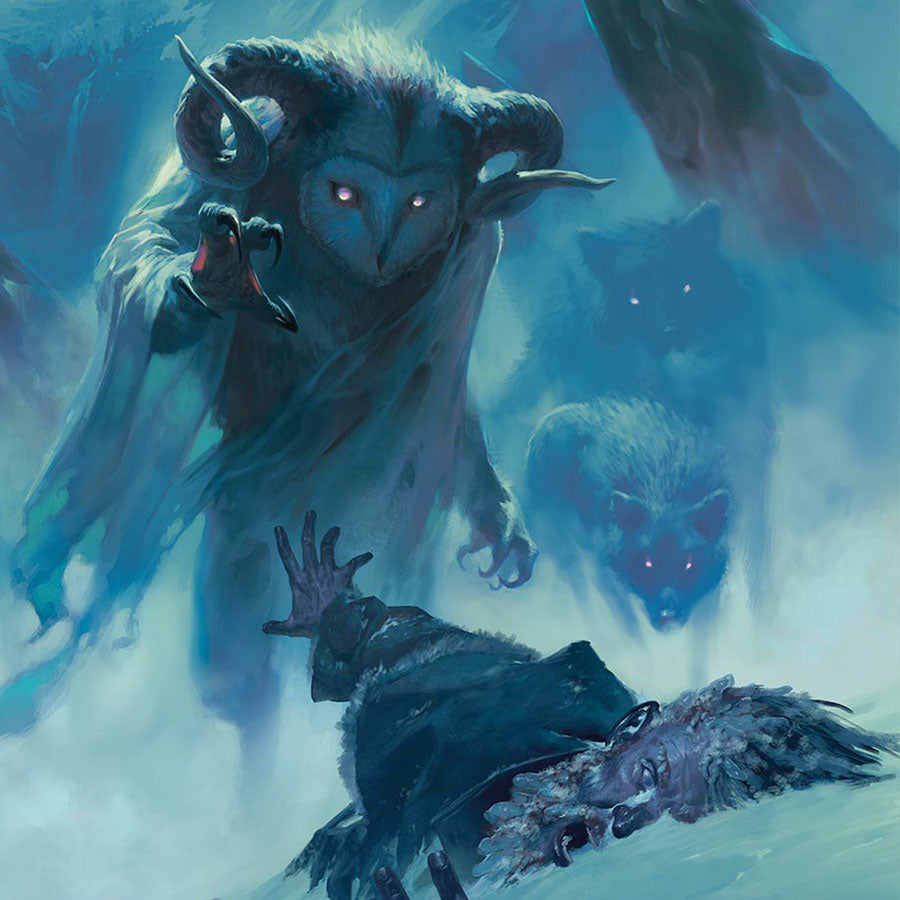
In Designing the Perfect D&D Boss Fight – Part 1, we talked about mechanics you can use to spice up any boss fight, be it at low levels, mid levels, or high levels. In this article, we’re going to focus on how to make mid-level and high-level boss fights more fun for your players.
Now, when your players are between levels 5 and 12, I’d definitely consider using these mechanics. However, from levels 13 and on, you pretty much need to be doing these things if you don’t want your bosses to be big wussy pushovers.
Oh, and, yes, by “fun” boss fights, I mean ones that are more tactically engaging and challenging than a surround and pound where your players basically just go into auto-pilot until the Big Bad is dead. Cuz that sort of thing is usually pretty lame, in my opinion.
By the way, if you play D&D 5e or Pathfinder 2 online and are a bit frustrated with having to set up maps, tokens, and lighting in your VTT, you should check out our premium Foundry VTT modules. Get professionally developed 5e and PF2e adventures and monsters for your games…and we do most of the work for you. All you need to do is install the module and start playing!
Watch or listen to this article by clicking the video below.
1. Legendary Resistence
The first basic thing that any mid to high level boss needs is LEGENDARY RESISTENCES. Trust me here, if your boss doesn’t have legendary resistances, they are dead meat. All it takes is one failed saving throw against a spell like hold person or Tasha’s Hideous Laughter to turn your awesome boss battle into a brutal surround and pound where they go down in one or two rounds.
Before I started giving my bosses legendary resistance, many of my boss fights suffered from quick and violent endings. What was supposed to have been a climatic and dramatic encounter turned into a boring beat down due to one failed saving throw.
Now, many of the creatures that the designers considered to be boss monsters already have legendary resistances. However, if you want to use a creature that doesn’t as a boss, just give it some legendary resistances.
I wouldn’t even worry about adjusting challenge ratings here, either. It’s not needed, and the CR system is so broken anyway, it’s not worth the mathematical hassle. At mid levels give your boss one or two legendary resistances. At higher levels a boss should have 3; at epic levels with level 20 PCs, I suggest 5 legendary resistances.
2. Gimmicks and Special Mechanics
The next thing any good boss should have is some gimmicks or special mechanics. That is, something that makes it special and makes the encounter a cut above the standard quo.
For instance, if I were to have a frost giant as a Big Bad, I would give it some special abilities. First, it can create a thick casing of ice over its skin, not only increasing its armor class, but creating an aura of cold damage. Anyone that starts their turn within 10 feet of the frost giant takes 2d6 cold damage, no save. Furthermore, if anyone attacks the frost giant from within 5 feet, they take piercing damage as shards of ice break off its skin and go flying about.
However, the gimmick doesn’t have to be special abilities. Imagine a necromancer in his lair, a giant cavern with bones strewn across the floor. Stone platforms float supernaturally in the air all about the chamber with magical portals atop them. During the battle, the necromancer uses the portals to teleport from one platform to another, making it difficult for characters to pin him down.
3. Waves and Reinforcements
Next use waves of combatants and reinforcements. You see, once a battle breaks out, it probably only takes your players one or two rounds to figure the situation out and settle into a rhythm. It’s your job to interrupt that rhythm and give them a new situation to resolve.
Just as your players rush forward to confront the frost giant and start flinging spells at him, a door to the side opens and a pack of winter wolves rush into the chamber. Since the fighter and barbarian are tied up with the frost giant chieftain, the wizard and bard are dangerously unprotected. The winter wolves sense this and close in for the kill.
And then, in round four, the frost giant smashes a gem to the ground, summoning a massive ice elemental. With the elemental tying up the melee characters, the giant falls back to a rock pile and begins pelting the adventurers from afar.
Now, not only does this sort of thing make the battle more interesting, but it also increases the challenge. So, just be sure to account for that when planning the encounter.
4. Minions
MINIONS! What Big Bad doesn’t have minions to help them out? And I’m not talking about just having other monsters fight by his side, but rather the one hit point version of monsters that 4th edition introduced to the game.
Basically, what I do here is find a monster whose challenge rating is significantly lower than the boss’s and have them be minions. They have only 1 hit point but are otherwise unchanged from the monster’s normal stat block. Then I throw about half a dozen of them into the combat. Sometimes, I even have more arrive at certain points in the battle.
Example: if I’m running an ancient white dragon, then I’ll use the water weird, a CR 3 creature, or a water elemental, a CR 5 creature, as a minion. Since it’s a white dragon, I’ll describe them as being mounds of animated snow and ice and will intentionally avoid calling them by their “real” names. That contributes to the ambiance and theme of the boss fight.
Or take our necromancer from earlier. The necro will be up on the floating platforms hurling spells at the heroes, and down below the bones filling the chamber will be animating as skeletons that attack. At the beginning of every other round, I might have 1d6 more skeletons animate. >>CU<< That’ll give the players something to think about!
5. Legendary Actions
Next up on the list is LEGENDARY ACTIONS. The single biggest thing a big bad boss suffers from is a lack of action economy when compared to the players. This means that for every 1 thing the boss gets to do, the players get to do four to six, depending on how many players there are and what special abilities they have that grant them extra actions. And when your boss is behind the curve with action economy, that’s a swift path to a quick death.
So, definitely give your bosses legendary actions, especially once your players hit level 12. This is going to allow them to match the number of actions your players can pump out in a round. And even if your boss already has minions, it probably still needs legendary actions.
Now, I like to give a few normal things such as basic attacks and movement as legendary actions. However, it’s also a good idea to think up something special that the boss can do as a legendary action. For instance, your necromancer might be able to radiate an aura of necrotic energy in a 10 foot radius that drains 1d6 hit points from creatures in the area of effect and transfers them to the necromancer as temporary hit points.
Now a note about creatures that already have legendary actions. I suggest adding movement as an option. I’ve often noted in combats that bosses can lose a lot of their legendary actions due to poor positioning on the map, so I almost always allow them to move as a legendary action in addition to what their stat blocks say they can do.
6. Lair Actions
And then we have LAIR ACTIONS. On initiative count 20, your big bad boss should be able to do something that manipulates the environment around him. Besides adding challenge, this makes things more interesting.
A white dragon can create walls of ice that spring up and cut characters off from one another. The necromancer can cause the bones on the floor to ripple in waves, knocking characters prone if they fail a saving throw. The frost giant slams its maul against the ground, causing shards of ice to fall from the ceiling, skewering characters and creating difficult terrain.
7. Extending Hit Points
Okay, next up: extending hit points. That is, giving your big bad more hit points during the combat depending on how quickly he’s going down. Now I have a feeling this is going to be a contentious topic, and how you feel about this really depends on whether or not you think a dungeon master should “play it as it lies” or if they should cultivate the game experience on the fly.
Now, I fall on the side of cultivating the game experience on the fly, so I have no problem with this sort of thing. If I see that a boss is going to drop in round two or three, resulting in an anti-climatic encounter that the players will likely find disappointing, I give the creature more hit points.
If you’ve played at higher levels, you know that PCs can easily put out nearly 100 hit points of damage a round – fighters, barbarians, and paladins routinely do this. And then you have spellcasters doing their thing. This easily can cause a boss with 300+ hit points to drop in one or two rounds.
So, when needed to prevent a boss battle from being completely lame and unchallenging, I extend hit points.
Here’s how I see it: If I as the dungeon master can customize the boss BEFORE the battle, give it special abilities, increase its hit points, etc. then how is it any different if I do those things DURING the battle? I personally don’t see a difference.
But here’s the important part, dungeon masters. If you do this, make sure you’re doing this FOR YOUR PLAYERS, not for yourself. That is, you do it to make the encounter more fun for them, not beat the crap out of them and kill them all.
I think at the crux of this issue is a very basic question for players out there: do you trust your dungeon master. Do you trust them to extend hit points for YOUR BENEFIT to make the game more fun for you? Or do you think the DM will abuse this ability?
If you trust your dungeon master, then you have nothing to worry about. However, if you don’t, then I’d argue you have larger issues than the DM extending hit points.
8. Account for PC Abilities
And next we have another likely controversial suggestion: account for the characters’ abilities. That is, when you design your boss fight, take into consideration what your players are able to do.
This becomes especially important if your players’ characters are min-maxed up the wazoo or if the dungeon master showed them with powerful magic items like they were candy.
Now I’m not suggesting that you counter and block everything they could possibly do—that’d be a wangrod DM move for sure. But if you know they all have boots of flying because you figure THAT would be a cool idea, then you dang well better makes sure you big bad can contend with flying characters.
For instance, characters that can fly would probably make short work of our necromancer on floating platforms. They’d bypass the skeletons down below (which can’t fly) and just home in on the necromancer. So, you need to make sure the necromancer has some ability or gimmick that can account for that.
Now, I’ll be honest. There is a fine line to be drawn here. You can do this just a little bit, but certainly don’t overdo it. Me personally, I avoid designing boss battles based on PC abilities in all but the most extreme cases.
9. A Note about Adjusting Challenge
By the way, a quick note about adjusting challenge ratings when you use these techniques. I feel that most dungeon masters will agree that challenge ratings suck and are very unreliable. So, I use them as a rough guideline, but certainly don’t put too much faith in them.
When I apply these mechanics to my boss fights, I may eyeball the challenge ratings of the encounter, but I certainly don’t take the time to crunch the numbers to determine the exact challenge rating of the encounter. First it’s very time consuming, and second, it’s not reliable anyway. So I just eyeball it, and then I rely on adjusting the encounter on the fly as it unfolds at my game table.
We Make Playing Online with Foundry VTT Easier Than Ever
Look, running a 5e or PF2e game can be challenging, and you’re probably busy enough with adult responsibilities as it is. Why not let the DM Lair team do some of the work for you?
With our professionally developed Foundry VTT modules, you’ll get expertly designed adventures and monsters with the following features:
- Scenes pre-configured with walls, lights, and high-res tokens
- Highly detailed immersive adventure maps
- Journal entries for the entire contents of adventures
- Read-a-loud text, interactive monster stat blocks, roleplaying notes, encounter notes, and more
Don’t spend another moment quickly throwing together an adventure before your next game session or scrambling to get everything set up in Foundry! Let DM Lair Foundry modules remove the frustration from GMing.
-
Posted in
Game Master How-To Articles




